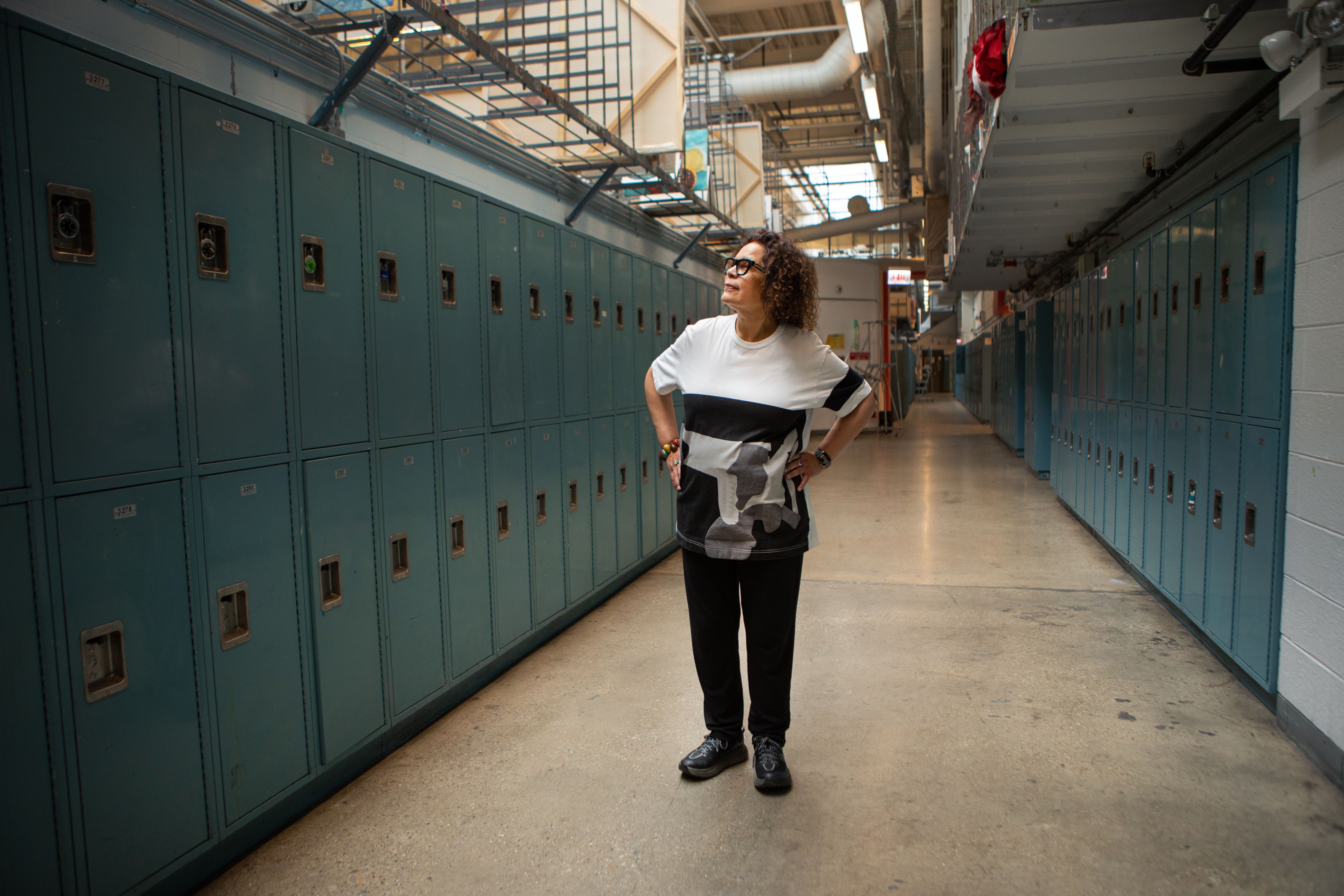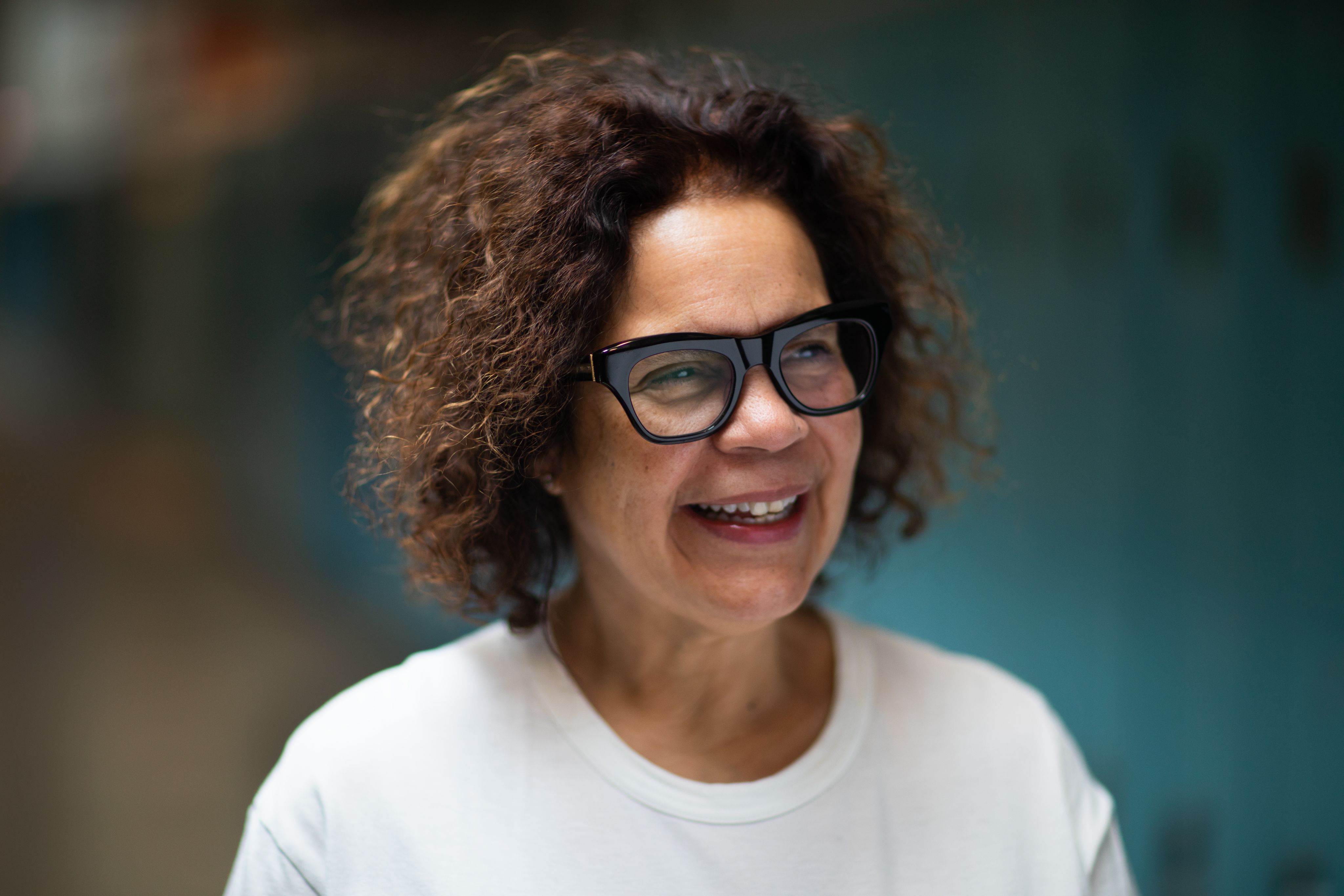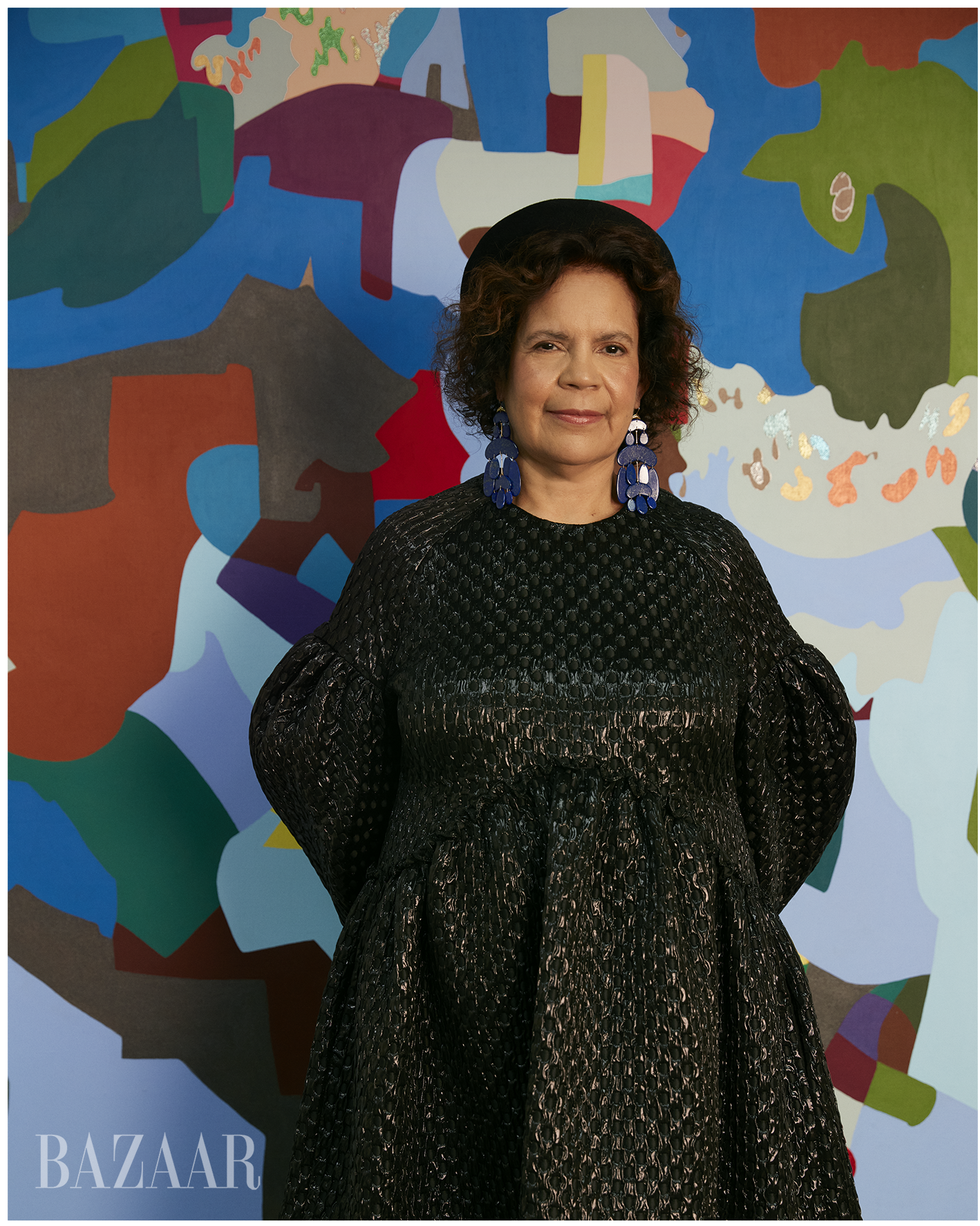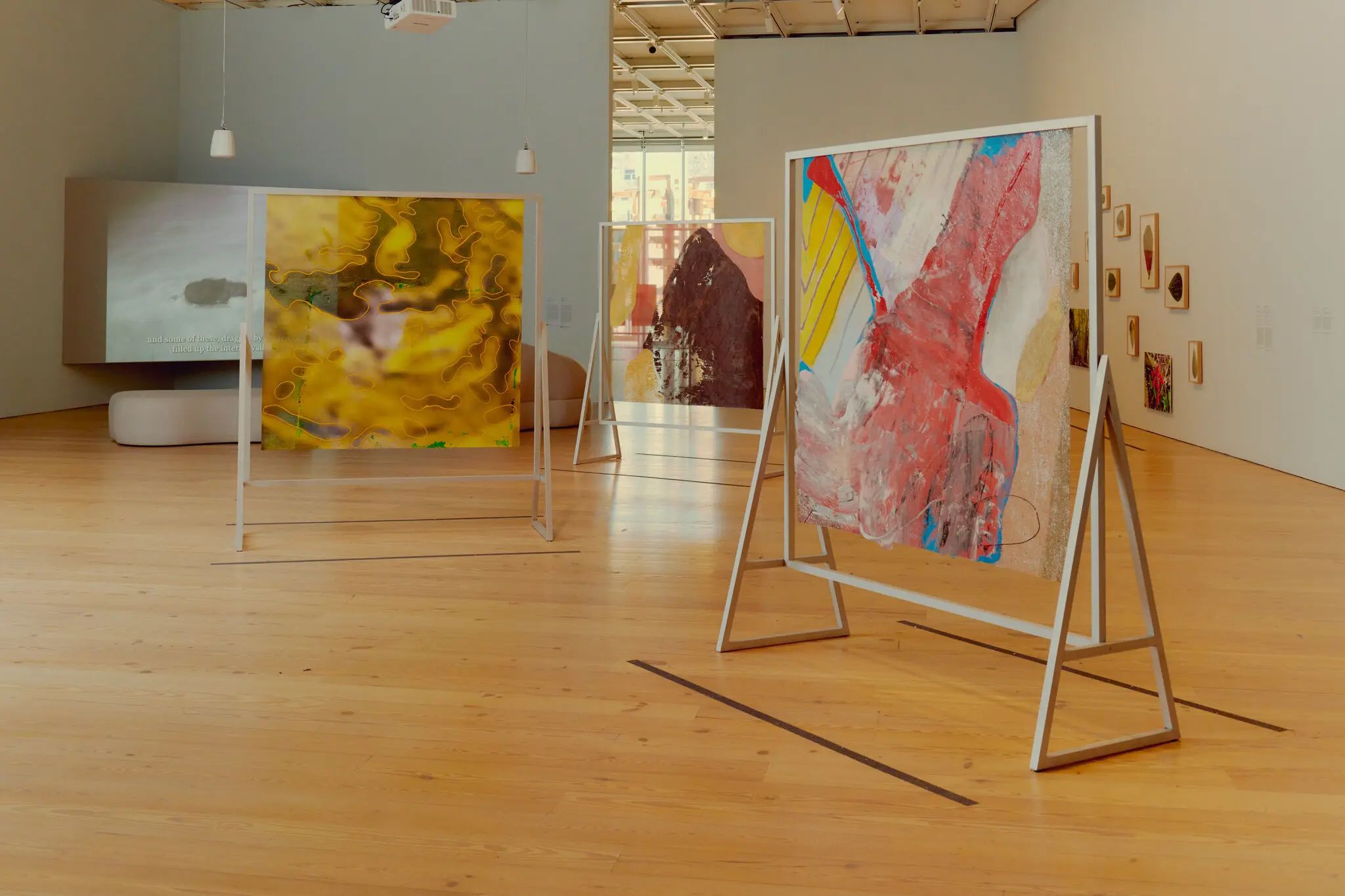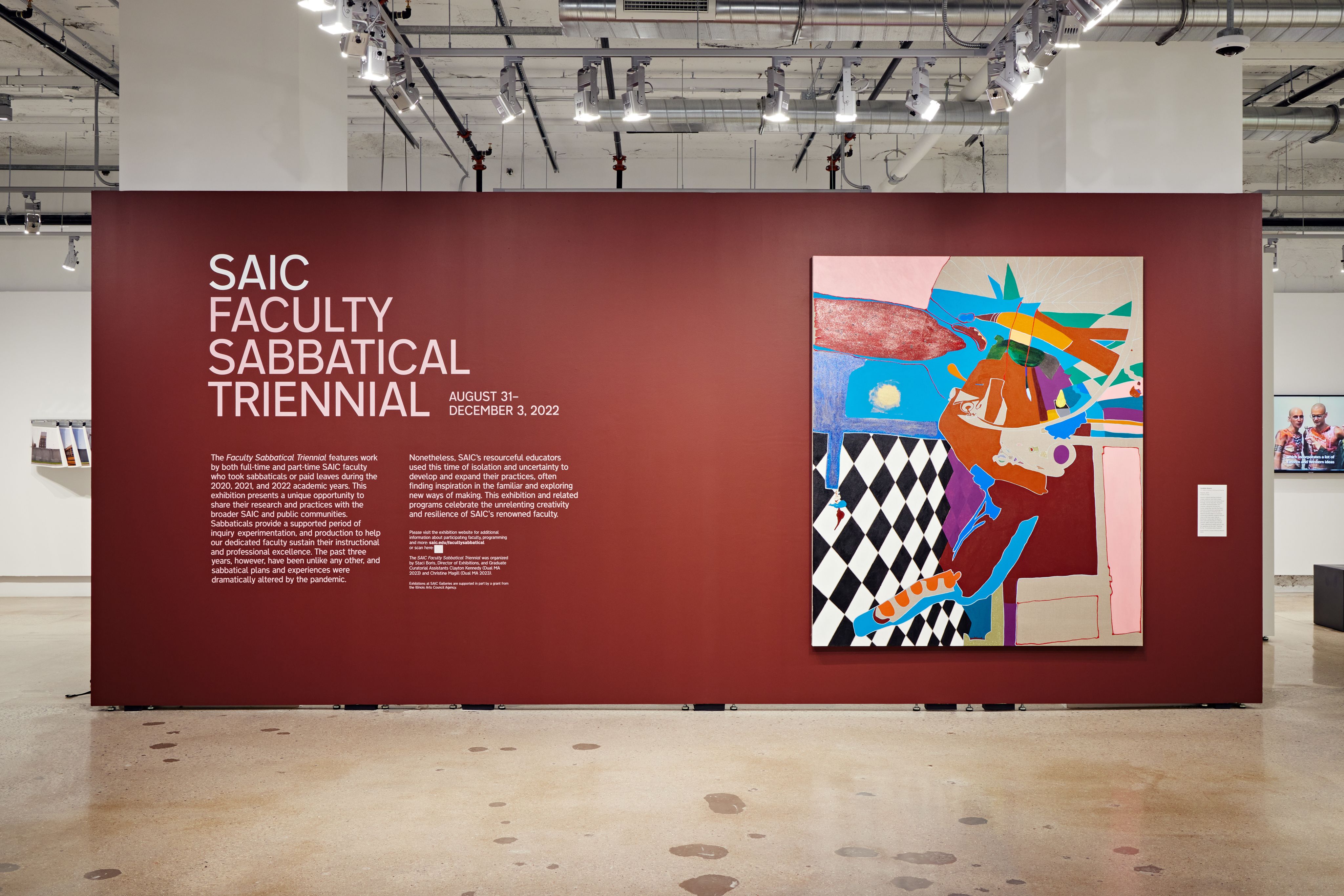Painting and Pedagogy: Tracing the Teaching Career of Candida Alvarez
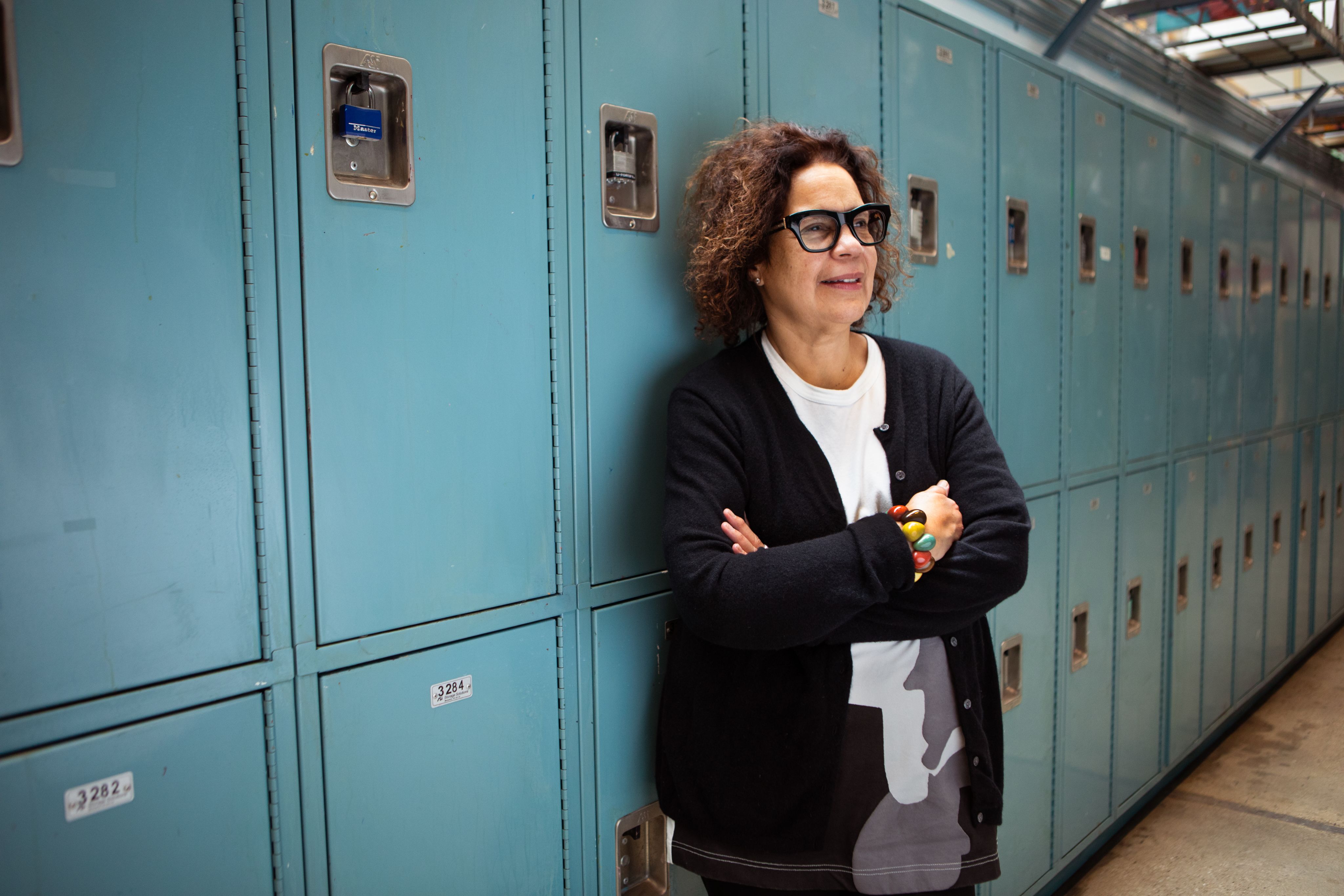
by Megan Kirby
Portraits by Ashley Thompson
When celebrated painter and School of the Art Institute of Chicago (SAIC) F.H. Sellers Professor in Painting Candida Alvarez was a little girl, she loved to stare at the stained-glass windows of her Brooklyn church.
Before she received any formal arts education, she absorbed the images from the Farragut public housing project where she grew up—Bible pictures, encyclopedias, family photographs, the view from her family's 14th floor apartment, and sunlight filtering through colored glass during Sunday service.
Witnessing Alvarez’s work—bright, large-scale abstract paintings with colors that seem to glow—makes it easy to connect back to her stained-glass memories. But when she sets up a projector to illuminate a studio wall, she thinks back to that church, too. “It’s almost like a stained glass window, when you’re in the dark and that light goes onto the wall. I love the way things that are familiar become disjointed,” she said. “I think everything is really an abstraction.”
Alvarez was hired at SAIC in 1998 as a full time professor in the Painting and Drawing department. Nearly three decades later, as she plans for her retirement this summer, she finds herself retracing those intervening years. Her time in the classroom. Her years serving as the first Latinx interim graduate dean from 2010–12 (where she was affectionately known as “La Deana"). Her exhibits in the spaces of The Whitney Museum of American Art, MoMA PS1, the Museum of Contemporary Art Chicago, and beyond. Through it all, her painting and pedagogy have evolved side by side.
While her artmaking and teaching inform each other, Alvarez is careful to keep the actual work in separate lanes. She shifts between Chicago and Baroda, Michigan, where she set up a studio during the COVID-19 shutdown in 2020. She has a small home alongside the 2,500-foot renovated barn that she turned into her studio, and she moves between the two.
Alvarez’s SAIC journey began more than 20 years ago. In the '70s she studied with Jack Whitten and Susan Crile and graduated with a bachelor of arts from Fordham University. In 1997, she graduated with a master of fine arts from the Yale School of Art, where she studied painting with artists like Mel Bochner, Francis Barth, David Pease, Catherine Murphy, Slyvia Plymouth Mangold, Rochelle Feinstein, and Howardena Pindell (HON 2021). The following year, a full-time position opened at SAIC in the Painting and Drawing department. She loved the School’s interdisciplinary approach and was impressed with esteemed faculty like Barbara Rossi, Bob Loesher, Dennis Adrian, Susan Doremus, Jim Lutes, and Gaylen Gerber. Getting the job felt like a long shot for her first full-time teaching position, but she visited campus to present to the hiring committee—and got the job.
“[Painting] doesn't have to just be a two-dimensional thing. It can also extend into the public spaces in a way that is related to scale. It can be three-dimensional. It can be performative. At the end of the day, when students can speak about the challenges and surprises that result from all their hard work, that is a good teaching day.”
At SAIC, working with both graduate and undergraduate students, she relished the opportunity to help talented students explore outside of their comfort zones. She learned from her colleagues in other departments—and she saw her students incorporate that same openness through their paintings and drawings. “[Painting] doesn't have to just be a two-dimensional thing. It can also extend into the public spaces in a way that is related to scale. It can be three-dimensional. It can be performative,” she said. “At the end of the day, when students can speak about the challenges and surprises that result from all their hard work, that is a good teaching day.”
Associate Professor Anne Harris has taught in the department alongside Alvarez since 2006. The two have team-taught several Advanced Painting Studio sessions. Through various undergraduate and graduate critique sessions, Harris has witnessed Alvarez’s thoughtful feedback to students. “She makes insightful, observant comments about work, but she manages to do it in a way that is always kind,” said Harris. “She uses very ordinary language and she manages to say a lot. She says things simply, clearly, and warmly.”
The questions Alvarez asks her students often help her examine her own artistic approach, as well. “Teaching has been an invaluable tool,” she said. “It’s helped me to understand myself better and it’s allowed me to really have courage and own the things I need to own. To own the mysteries, to own the questions, to not be certain about anything really except that I’m determined to get something done.”
Alvarez hesitates to make too many comparisons between teaching and painting. But both activities hone in on the same goal: communication. “They’re two very different things,” she said. “But there is also this interconnection, which is about how to be clear about what’s important.”
Alvarez was one of the artists spotlighted in the Harper's Bazaar article "How Chicago Became an Art-World Capital Without Giving In to Art-World Clichés."
Alvarez was one of the artists spotlighted in the Harper's Bazaar article "How Chicago Became an Art-World Capital Without Giving In to Art-World Clichés."
Two Alvarez pieces that appeared in the Whitney Museum exhibition No existe un mundo poshuracán: Puerto Rican Art in the Wake of Hurricane Maria.
Two Alvarez pieces that appeared in the Whitney Museum exhibition No existe un mundo poshuracán: Puerto Rican Art in the Wake of Hurricane Maria.
Alvarez debuted a new painting at the SAIC Faculty Sabbatical Triennial.
Alvarez debuted a new painting at the SAIC Faculty Sabbatical Triennial.
“Teaching has been an invaluable tool. It’s helped me to understand myself better and it’s allowed me to really have courage and own the things I need to own. To own the mysteries, to own the questions, to not be certain about anything really except that I’m determined to get something done.”
This year, Alvarez is currently working on a new series of paintings called Flor de Caballo (Horse Flower) inspired by two meaningful objects that can describe her last 25 years of teaching: orchid flowers and an earthenware Tang dynasty sculpture of a woman guiding her horse into a turn. She encountered the statue on her first visit to the Art Institute of Chicago back in 1998. “It represents, for me, a visual possibility to link the beauty and time within these two perfect forms from which to draw inspiration for new work that can nod to this moment,” she said. “This amazing trajectory and celebration within my life.”
Whether she’s working in the classroom or on the canvas, Alvarez focuses on the “living process” that lives between teaching and making—the ebb and flow of experimentation towards the mastery of technique. There are no right or wrong answers; only a journey through the alchemy of colors and the process of creation. “You have to learn how to put something down and change your mind about it,” she said. “And so, by doing that, you start to understand what it is that you're seeking.”
In her artistic life, Alvarez’s star continues to rise. Her first solo painting exhibition was at the Hyde Park Art Center in 2012, followed by an extensive review of her work at the Chicago Cultural Center in 2017, with a subsequent publication from Green Lantern Press, Candida Alvarez: Here. A Visual Reader. Her first commercial exhibition in Chicago debuted at the Monique Meloche gallery in 2020. In 2022, she was named a recipient of the Latinx Artist Fellowship, which includes a $50,000 grant. Shortly after, her work was featured in a Whitney Museum exhibition and spotlighted by the New York Times and Harper’s Bazaar.
Still, Harris recalls that Alvarez has always exemplified the life of a working artist to her students—where professional success is appreciated, but the real focus remains on creating the work. “She’s a model of somebody who’s in it for life,” Harris said. “She did it whether or not the light was on her, and now it’s on her. And she deserves it.” ■
